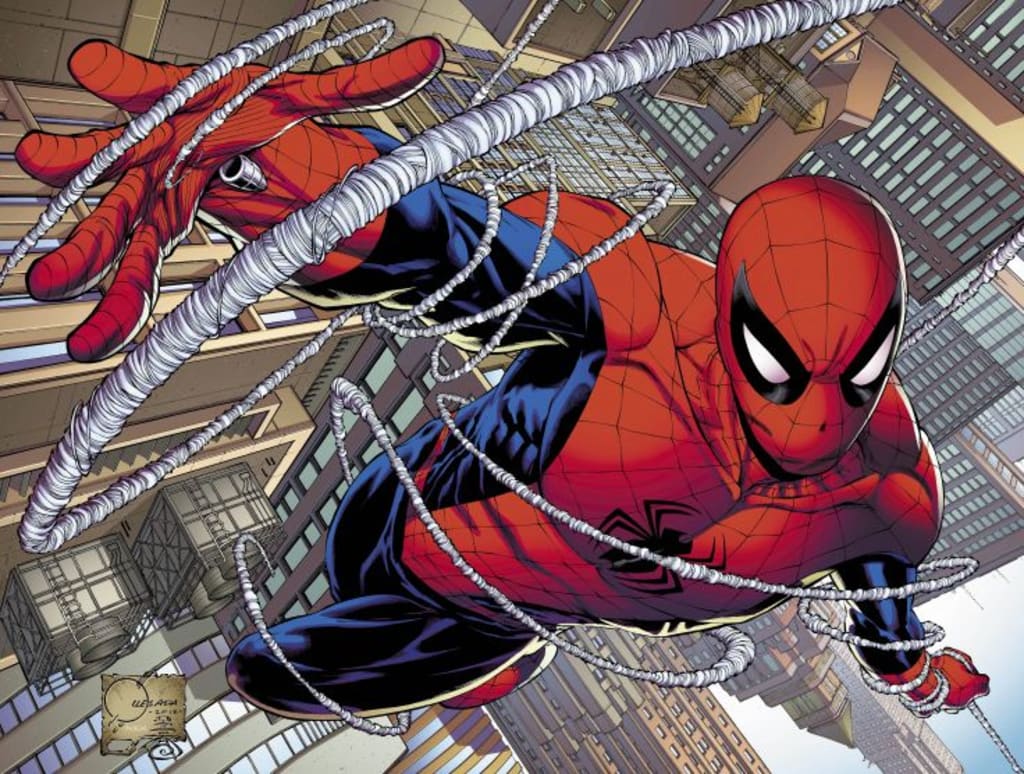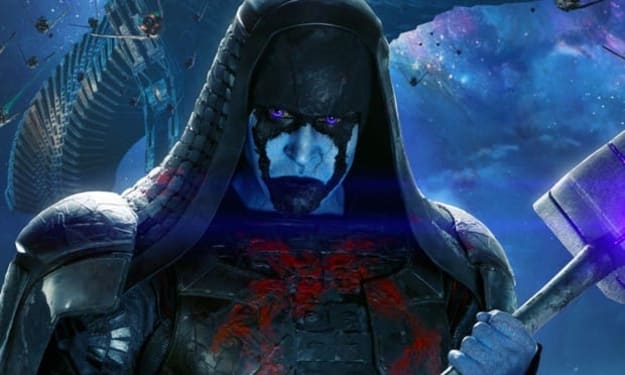
Spider-Man: Homecoming is a Marvel movie like no other. Jon Watts is incredibly aware that he's dealing with the ultimate legacy character, a hero whose adventures have been chronicled nonstop in comics since 1962's Amazing Fantasy #15. At the same time, though, he's also conscious that this is the third iteration of the wall-crawler we've seen since 2002, and Amazing Spider-Man 2 was only released three years ago. As a result, Homecoming takes a very different approach to adapting the comics than anything we've seen before.
It's time to explore just how the comics informed the movie. Be warned: Spoilers follow beyond this point!
The General Tone and Style
Although Stan Lee and Steve Ditko created Peter Parker as a high school student, that status really didn't last long. Lee had no idea how successful a character Spider-Man would be, and as a result his high school era ended in Amazing Spider-Man #28. Modern-day comic book writers have generally considered that to be a mistake, and there's a reason Brian Bendis and Mark Bagley kept Peter Parker in high school when they relaunched Spider-Man in the Ultimate Universe. Stylistically, Homecoming is closer to this run than any other Spider-Man book, and Mark Bagley even gets a nod in a cool Easter Egg. It's no surprise that fans of the film (including comic book writers) have thanked Bendis for laying the groundwork for Homecoming.
Genuinely felt like I was watching something you wrote. Very cool.
— Nick Spencer (@nickspencer) July 7, 2017
I'd suggest, though, that Jon Watts seems to have moved a little beyond the comics. The tone and style of Spider-Man: Homecoming is very much reminiscent of the dearly loved (but sadly cancelled) Spectacular Spider-Man series, which was also set during Peter Parker's high school years. It carries the same sense of exuberance and joy you find in that series, while thematically there are similar concepts underlying some character arcs.
At the same time, as he's dealing with a rookie Peter Parker, Watts carefully lessens the sense of grace that you find in most portrayals of Spider-Man. This is a Peter Parker who's yet to really develop an awareness of his environment, who doesn't realize he's run out of tall buildings until after he's fired his webs, or who skids in an awkward landing that sends him sprawling. That's a notable departure from pretty much anything we've seen before, whether in comics, movies, or animated shows.
It's all been done before.
The fundamental problem facing Jon Watts is, quite simply, that it's all been done before. We've all seen the major Spider-Man tropes play out on the big screen (five times); we've had Kirsten Dunst's Mary-Jane and Emma Stone's Gwen Stacy; we've seen Spider-Man go head to head with a Green Goblin no less than four times since 2002. Comic book fans usually want a straight adaptation, but given that context, a simple rinse-and-repeat approach would doom the project to failure.
As a result, Homecoming reinterprets Spider-Man's world in a fascinating way. When asked about the surprisingly diverse case, Producer Amy Pascal explained:
"I would say the inspiration for it was reality."
She's got a point. The world has changed a lot since 1962; no present-day New York high school would have the sea of white faces we see in the Stan Lee and Steve Ditko era. Rather than just add a diverse background, Watts dares to reinterpret classic characters in order to improve the film's diversity. I strongly suspect that both Zendaya's MJ and Tony Revolori's Flash Thompson will prove to be very controversial indeed among comic book fans.
While there may well be an element of racism among some of those who object to these casting choices, it's worth noting that there are other reasons. Comics are a visual medium, and fans grow attached to characters because they appeal to them visually. In the case of Mary-Jane, for example, the character's distinctive red hair is rightly viewed as iconic by fans of the Spider-Man franchise. What's more, there's always been a sense of wish-fulfillment in that particular relationship; comic book fans are traditionally geeky, after all, and nerdy Peter Parker winds up marrying the hot redhead model. For fans of Mary-Jane, a deviation on this scale is likely to be experienced as something of a slap in the face.

At the same time, though, for all Watts has updated these characters, there are some similar concepts. Take Flash Thompson; Tony Revolori may have explained that modern bullying has changed, but a lot of the bullying scenes are pretty much comic book-accurate. There's a car scene that's lifted straight from the comics, and "Penis Parker" is clearly a modernized version of Flash's old nickname for Peter, "Puny Parker."
Watts is treading a fine line here, and we'll only really get a sense of how well he's done it as we watch the reactions — both among fans, and among the general audience.
From Subtle Inspiration to Overt Nods
As I've discussed in an earlier article, Jon Watts carefully reworks some of the classic Spider-Man tropes. Michael Keaton's Vulture absorbs a lot of character beats from Norman Osborn. For example, he's the father of someone Peter is close to and he works out Spider-Man's secret identity. In a smart visual cue, the street-lights turn green at the moment Toomes works it out. The close-up on his face is flooded with emerald light, a nod to the classic Green Goblin arc Watts is adapting.
Jacob Batalon is essentially Ned-In-Name-Only. Comic book fans will actually recognize the character as Ganke, a close friend of Miles Morales's Ultimate Spider-Man. The Lego scene — complete with the unfortunate fate of the Lego Death Star — is a beautiful homage to Ultimate Comics: Spider-Man #2, where a panicked Miles reveals his powers to Ganke.

'Ultimate Comics: Spider-Man' #2 [Credit: Marvel Comics]
Probably the most notable scene, though, is an homage to the cover of Amazing Spider-Man #33. In the comics, the scene plays out as one of the defining moments of Spider-Man's life. Aunt May is dying, and he is trapped beneath the rubble. It's generally viewed as one of the strongest comics of all time, as Spider-Man demonstrates his strength and will like never before, gradually shifting the rubble. While there are no personal stakes in Homecoming — Aunt May isn't ill, after all — Watts still plays the scene fairly straight. It's a defining moment in Homecoming, as Peter refuses to give up, and proves to himself that he is truly a hero.
Watts complements this with an artistic scene in which Peter looks at his mask in a pool of water. We get a half-and-half shot of Peter's reflected face and the mask of Spider-Man, a visual that was beloved by Spider-Man artists in the '80s and '90s and that informed almost all previous Spider-Man movies. Rendering it so artistically ensures that we see this image as something fresh and new, beautifully innovative and remarkably powerful.
When it comes to comic book adaptations, Spider-Man: Homecoming is like no #Marvel movie I've seen before. That's largely because Jon Watts knows he's dealing with a character — complete with tropes and arcs — that fans already know a little too well. The #SpiderMan of the #MCU must be fresh and new, otherwise the film will just feel like a rinse-and-repeat of things we've already seen. He embraces this challenge in a fascinating way, avoiding repetition and yet carefully paying homage to the source material. Personally, I found it effective, but I do suspect that among traditional comic book fans this film will prove to be deeply divisive.
About the Creator
Tom Bacon
A prolific writer and film fan, Tom has a deep love of the superhero genre.






Comments
There are no comments for this story
Be the first to respond and start the conversation.